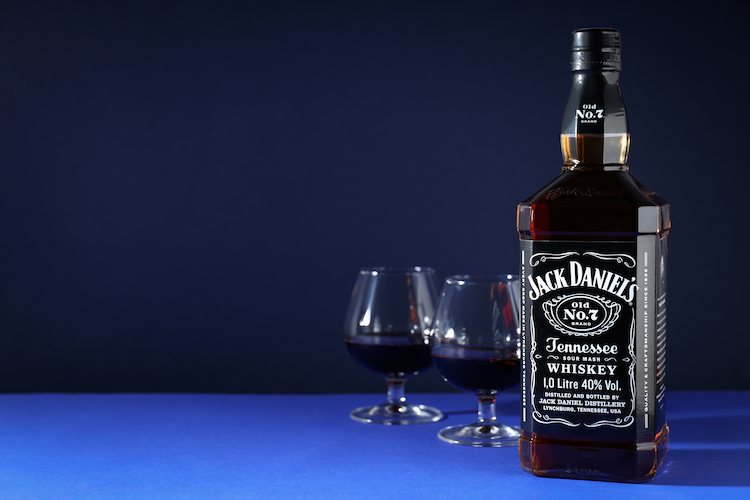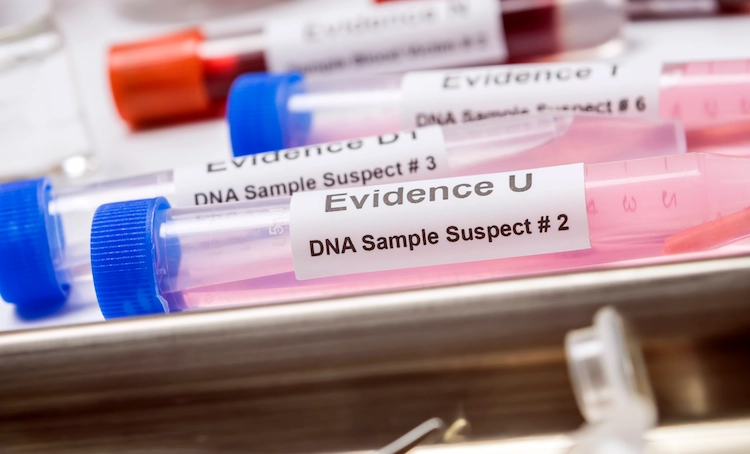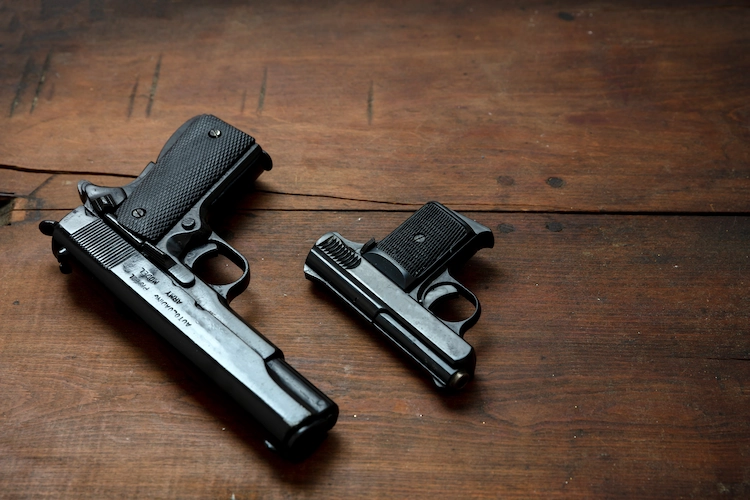SCOTUS Sides With Jack Daniels in Dog Toy Trademark Dispute

In Jack Daniel’s Properties v. VIP Products LLC, 599 U.S. ____ (2023), the U.S. Supreme Court unanimously found that when an alleged trademark infringer uses the mark as a designation of source for its own goods or services the threshold test for expressive works established in Rogers v. Grimaldi, 875 F. 2d 99 (1989) does not apply. The Court further held and the Lanham Act’s exclusion from liability for “[a]ny noncommerical use of a mark” does not shield parody, criticism, or commentary from a claim of trademark dilution.
Facts of the Case
Respondent VIP Products LLC (VIP) sells the “Bad Spaniels Silly Squeaker” dog toy, which resembles a bottle of Jack Daniel’s Old No. 7 Black Label Tennessee Whiskey, but has light-hearted, dog-related alterations. For example, the name “Jack Daniel’s” is replaced with “Bad Spaniels,” “Old No. 7” with “Old No. 2,” and alcohol content descriptions with “43% POO BY VOL.” and “100% SMELLY.”
After Jack Daniel’s Properties, Inc. (Jack Daniel’s) demanded that VIP cease selling the toy, VIP filed this action, seeking a declaration that the toy did not infringe Jack Daniel’s trademark rights or, in the alternative, that Jack Daniel’s trade dress and bottle design were not entitled to trademark protection. Jack Daniel’s counterclaimed, asserting trademark infringement and dilution.
The district court found that VIP’s use of Jack Daniel’s trademarks was likely to confuse consumers, infringed Jack Daniel’s marks, and tarnished Jack Daniel’s reputation. The Ninth Circuit reversed. It held that VIP’s First Amendment interest in using Jack Daniel’s trademarks as its own marks on funny dog toys conferred special protection from infringement claims.
In reaching its decision, the Ninth Circuit found that Bad Spaniels is an expressive work and applied the test set forth in Rogerswhich requires the plaintiff to show that the defendant’s use of the mark is either (1) “not artistically relevant to the underlying work” or (2) “explicitly misleads consumers as to the source or content of the work.” Because it found VIP’s commercial dog toys are “noncommercial,” the Ninth Circuit also found they were exempt from dilution-by-tarnishment claims.
After determining the infringement claim was subject to the threshold Rogers test, the Ninth Circuit remanded the case to the District Court to decide whether Jack Daniel’s could satisfy either prong of that test. On remand, the District Court found that Jack Daniel’s could not satisfy either prong of Rogers, and it granted summary judgment to VIP on infringement.
Supreme Court’s Decision
The Supreme Court reversed, holding that when an alleged infringer uses a trademark as a designation of source for the infringer’s own goods, the Rogers test does not apply. Justice Elena Kagan wrote on behalf of the unanimous Court.
In reaching its decision, the Court emphasized that the Second Circuit created the Rogers test for titles of “artistic works” based on its view that such titles have an “expressive element” implicating “First Amendment values” and carry only a “slight risk” of confusing consumers about the “source or content” of the underlying work. It also noted that other lower courts applying the test limited its application to similar cases, in which a trademark is used not to designate a work’s source, but solely to perform some other expressive function. As Justice Kagan explained:
The point is that whatever you make of Rogers—and again, we take no position on that issue—it has always been a cabined doctrine. If we put this case to the side, the Rogers test has applied only to cases involving “non-trademark uses”—or otherwise said, cases in which “the defendant has used the mark” at issue in a “non-source-identifying way.” The test has not insulated from ordinary trademark scrutiny the use of trademarks as trademarks, “to identify or brand [a defendant’s] goods or services.”
According to the Court, the Rogers test is “not appropriate when the accused infringer has used a trademark to designate the source of its own goods — in other words, has used a trademark as a trademark.” Justice Kagan emphasized that the result does not change because the use of a mark has other expressive content—i.e., because it conveys some message on top of source. Notably, the Court’s narrow decision did not directly address the merit of the Rogers test or when it may be appropriate to apply.
Previous Articles
SCOTUS Rules Death Row Inmate Has Standing to Challenge Post Conviction DNA Testing Procedures
by DONALD SCARINCI on September 11, 2025
In Gutierrez v. Saenz, 606 U.S. ____ (2025), the U.S Supreme Court ruled that a death row inmate ha...
Supreme Court Clarifies Applicability of First Step Act to Vacated Sentences
by DONALD SCARINCI on September 4, 2025
In Hewitt v. United States, 606 U.S. ____ (2025), a divided U.S. Supreme Court held that the First ...
SCOTUS Rules E-Cigarette Retailers Can Challenge FDA Order in Fifth Circuit
by DONALD SCARINCI on
In FDA v. R. J. Reynolds Vapor Co., 606 U.S. ____ (2025), the U.S. Supreme Court held that e-cigare...
The Amendments
-
Amendment1
- Establishment ClauseFree Exercise Clause
- Freedom of Speech
- Freedoms of Press
- Freedom of Assembly, and Petitition
-
Amendment2
- The Right to Bear Arms
-
Amendment4
- Unreasonable Searches and Seizures
-
Amendment5
- Due Process
- Eminent Domain
- Rights of Criminal Defendants
Preamble to the Bill of Rights
Congress of the United States begun and held at the City of New-York, on Wednesday the fourth of March, one thousand seven hundred and eighty nine.
THE Conventions of a number of the States, having at the time of their adopting the Constitution, expressed a desire, in order to prevent misconstruction or abuse of its powers, that further declaratory and restrictive clauses should be added: And as extending the ground of public confidence in the Government, will best ensure the beneficent ends of its institution.





